Happy St. Patrick’s Day
It’s kind of interesting that corned beef and cabbage, a meal closely associated with St. Patrick’s Day in America, is rarely eaten in Ireland. Historically, pork was the favored meat, and cows were kept mainly for milk production.
An Irishman’s wealth used to be based on the number of cattle in his herd, and killing a cow to eat it effectively diminished a person’s wealth and status. In later years, beef was still much too expensive for most people, and corned beef was considered a delicacy to be maybe eaten at Easter.
Corned Beef History
The history of corned beef and cabbage is closely tied to the culinary traditions of Ireland and the influence of Irish immigrants in the United States. While it is often associated with Irish cuisine, its origins are a bit more complex.
- Corned Beef: The term “corned” refers to the large grains of salt historically used in the curing process, which resembled kernels of corn. Curing beef with salt has been a preservation method for centuries, dating back to ancient times. In Ireland, beef was typically cured with salt as a preservation method, but it wasn’t as commonly consumed domestically as it is today.
- In Ireland, pork was the most commonly consumed meat due to its affordability and availability. Beef was often considered a luxury; the lower classes primarily ate pork or other meats. However, during the 17th century, when Ireland experienced economic hardship and a series of famines, beef became more prevalent as a dietary staple. This was partly due to the British control of Ireland and the exportation of Irish beef to other parts of the British Empire.
- Irish Immigration to the United States: During the 19th century, particularly during the Irish Potato Famine (1845-1852), millions of Irish immigrants fled to the United States for better opportunities and to escape famine and poverty. Many of these immigrants settled in urban areas like New York, Boston, and Chicago. In their new home, Irish immigrants adapted their culinary traditions to the ingredients available to them in America.
- New Ingredients, New Dish: Irish immigrants found beef more affordable and readily available in the United States than in Ireland. Additionally, cabbage was a common vegetable among many immigrant groups in America. Cabbage was also affordable and could be grown easily. As a result, corned beef and cabbage emerged as a popular dish among Irish immigrants in the United States. It was a hearty, flavorful meal that was easy to prepare and could feed a large family.
- St. Patrick’s Day: Corned beef and cabbage became especially associated with St. Patrick’s Day, which is celebrated on March 17th in the United States. While the dish is not as commonly consumed in Ireland for St. Patrick’s Day, it has become a staple in Irish-American holiday celebrations.
Overall, the history of corned beef and cabbage reflects the culinary adaptation of Irish immigrants in the United States and the fusion of traditional Irish ingredients with American ones. Today, it remains a beloved dish and a symbol of Irish-American heritage.
Is it Popular in Ireland?
Corned beef and cabbage is less popular in Ireland than in the United States, where it’s often associated with St. Patrick’s Day celebrations. In fact, it’s more commonly associated with Irish-American cuisine than traditional Irish cuisine.
In Ireland, while corned beef and cabbage are consumed separately, they are not typically paired in the same dish as in the United States.
Traditionally, bacon and cabbage are a more common dish in Ireland. Bacon, which in Ireland refers to cured pork loin or back, is boiled with cabbage and often served with potatoes. This dish has a long history in Irish cuisine and remains popular today.
So, while corned beef and cabbage have become symbols of Irish-American culinary traditions, their popularity in Ireland is relatively limited compared to other traditional Irish dishes.
What Is Typically Served with Corned Beef and Cabbage?
Corned beef and cabbage is often served with additional side dishes to complement its flavors and create a well-rounded meal. Some common side dishes served with corned beef and cabbage include:
- Potatoes: Potatoes are a classic accompaniment to corned beef and cabbage. Depending on preference, they can be boiled, mashed, or roasted.
- Carrots: Carrots add sweetness and color to the dish. They can be boiled along with the cabbage or roasted separately.
- Mustard: A side of mustard, such as Dijon or whole grain mustard, can provide a tangy contrast to the rich flavors of the corned beef.
- Bread: Slices of hearty bread, such as Irish soda or rye bread, are often served alongside corned beef and cabbage to soak up the juices and enhance the meal.
- Horseradish: Horseradish sauce or grated horseradish can be served as a condiment to add a spicy kick to the dish.
- Pickles: Pickled vegetables, such as gherkins or pickled onions, can provide a crunchy and tangy meal.
- Beer: A cold beer, particularly a stout or ale, is a popular beverage choice to accompany corned beef and cabbage, especially on St. Patrick’s Day.
These side dishes complement the corned beef and cabbage flavors, providing a satisfying and well-balanced meal. Since I live in the United States and intend to celebrate as an Irish-American, I will serve corned beef and cabbage on St Paddies Day. At its heart, it is a very simple dish and is often spiced.
To make it a true celebratory meal, I’ve added some complexity by beer braising and enriched the dish by finishing it with some melted butter.
Corned Beef and Cabbage Recipe
Ingredients
For the Corned Beef
- 1 pound salt kosher
- 1 gallon water
- 8 pounds beef brisket trimmed of most of its fat
For the Corned Beef and Cabbage
- 1 beef brisket 6-8 pounds, patted dry
- 2 tablespoons vegetable oil
- 2 tablespoons melted butter
- 1½ teaspoons whole peppercorns
- 3 dried bay leaves
- 1 head cabbage trimmed of outer leaves, cored and cut in quarters
- 14 medium red potatoes skin on, halved or quartered, depending on the size
- ½ pound carrots peeled and sliced
- 2 cloves garlic crushed
- 1 Harp's lager or similar lager
- water
- 3 tablespoons fresh parsley minced
- 3 tablespoons melted butter
- Fleur de Sel to taste*
Instructions
For the Corned Beef
- Heat water and salt together until salt is dissolved. Cool, and put in a large container. Submerge the meat in the brine for seven days. The meat must be completely submerged, so either place a weight on top of the meat (such as a heavy jar or can in a plastic bag) or double the water and salt. This must be refrigerated.
- After a week, rinse the brine off the meat and pat dry. Discard the brine, and continue with the recipe for Corned Beef and Cabbage below.
For the Corned Beef and Cabbage
- Preheat oven to 275° F.
- Heat a Dutch oven over medium heat until hot. Add oil and butter and heat.
- Sear brisket on all sides until deep golden brown, about 3 minutes per side. Pour beer over the beef. Add enough water to come halfway up the meat.
- Wrap the peppercorns and bay leaves in a square of cheesecloth and place in the Dutch oven with the meat. Cover the pot tightly, and braise for 2½ hours, or until meat is tender.
- Remove the peppercorns and bay leaves.
- Place the potatoes around the meat, followed by the garlic, carrots and cabbage. Add enough water to barely cover. Bring to a simmer on the stove top, then cover the Dutch oven and braise until vegetables are tender, about 30 minutes.
- To serve, drain the vegetables with a spider or a slotted spoon, and arrange them on a serving platter. Drizzle melted butter over the vegetables.
- Thinly slice the beef across the grain and place on top of the vegetables. Garnish with minced parsley and lightly sprinkle with just a pinch or two of Fleur de Sel.

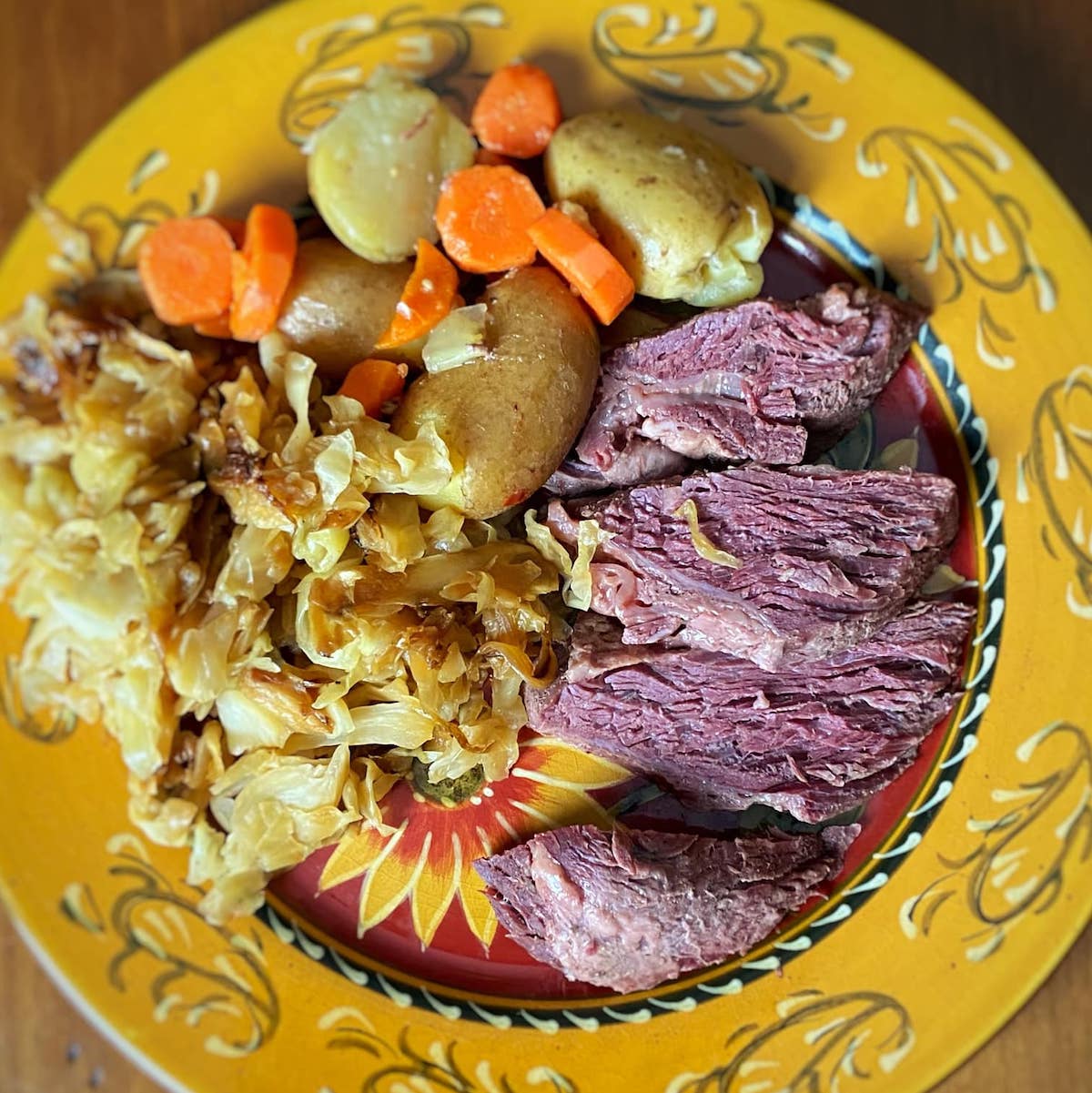




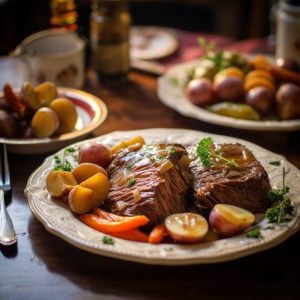
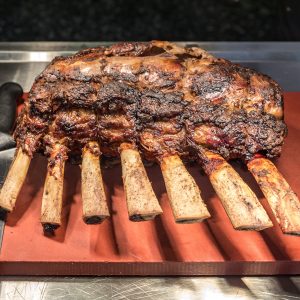

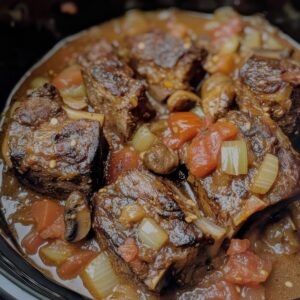
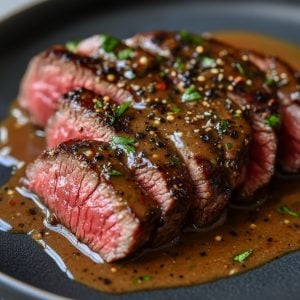
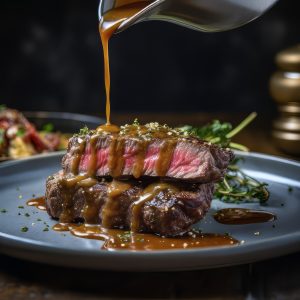
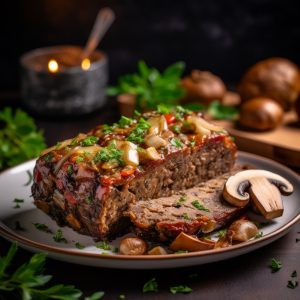
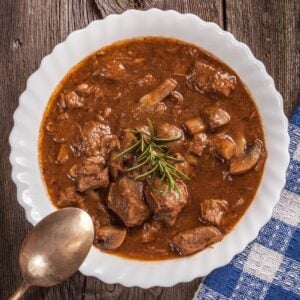


4 Responses
This recipe sounds so good. I love corned beef! I think I will prepare your recipe using grass fed beef
If only other webmasters would do what you have done and build a really worthwhile site on the subject. Most of them load the pages with junk, but this is exactly what I was looking for. Thank you from a very grateful Carrie Mason
Do you rinse the corn beef brisket?
Hi Vicky, yes, the recipe says to rinse after a week. Happy St Paddy’s day to you and please let me know how your corned beef and cabbage turns out. – RG
This is actually something I never think of making. Since discovering grass fed beef, I’m serving it more and am looking for some different recipes. This is a good idea.